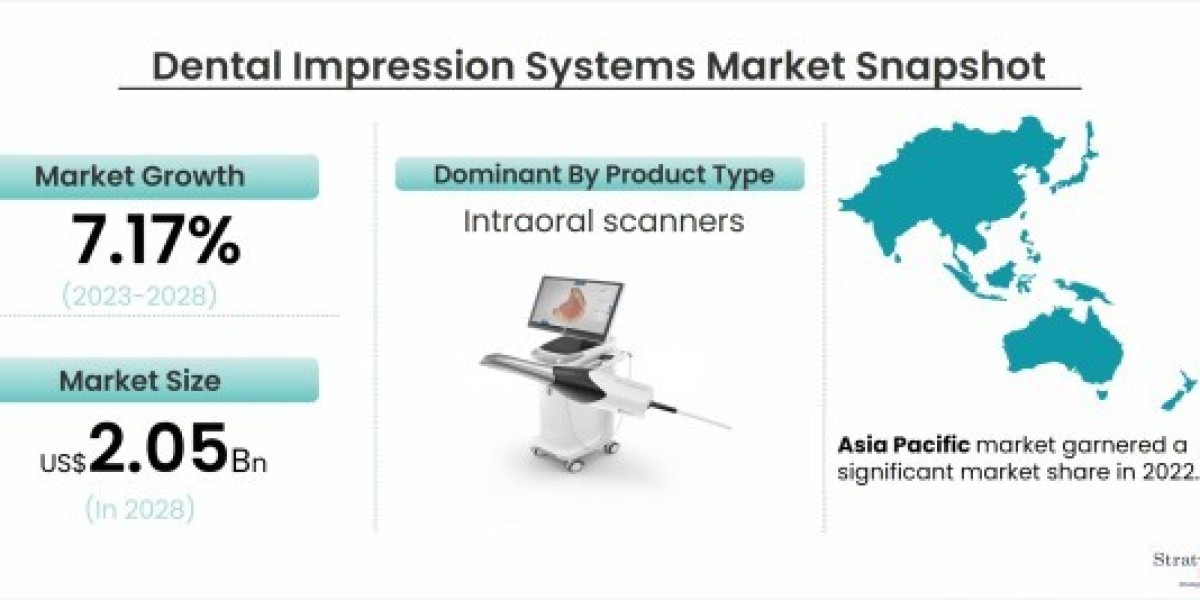Introduction
A dental impression is a negative imprint of teeth and soft tissues surrounding the teeth in the mouth from which a positive castor reproduction can be produced. The dental digital impression systems can capture intraoral scans of a patient’s gingival tissue and teeth to create a 3D digital model that can be used for CAM/CAD dentistry. It is a disruptive technological advancement that surpasses the efficiency and accuracy of former techniques for obtaining replicas of prepared teeth to fabricate restorations.
The global dental impression systems market is estimated to grow from USD 1.35 billion in 2022 to USD 2.05 billion by 2028 at a CAGR of 7.17% during the forecast period.
The dental impression systems market is undergoing significant transformation, driven by advancements in technology and a growing demand for accurate, efficient, and patient-friendly dental procedures. Dental impressions, traditionally created using manual molds, are vital in restorative and orthodontic treatments. However, the introduction of digital dental impression systems is revolutionizing the process by offering more precise and faster results.
Market Drivers
A key driver of growth in the dental impression systems market is the increasing adoption of digital scanners. Unlike traditional putty-based impressions, which can be uncomfortable for patients and prone to inaccuracies, digital systems provide real-time imaging that enhances precision. Dentists and orthodontists can now create virtual models of the mouth with intraoral scanners, allowing for faster and more accurate production of crowns, bridges, and dentures.
Moreover, the rising demand for cosmetic dentistry is fueling the market. As consumers seek aesthetic dental solutions, the need for high-quality impressions that result in well-fitting and durable dental prosthetics has risen. The use of digital systems also enhances the patient experience by reducing the number of appointments and eliminating the need for remakes due to errors in traditional impressions.
Technological Advancements
Intraoral scanners are continuously evolving, with improved features such as cloud storage integration, enhanced resolution, and faster processing times. Companies in this market are innovating to provide systems that offer compatibility with various Computer-Aided Design and Computer-Aided Manufacturing (CAD/CAM) technologies. This integration allows for seamless communication between the scanning, designing, and manufacturing phases, reducing overall treatment time.
Regional Insights
North America and Europe are leading the market due to their advanced healthcare infrastructure and high adoption rates of digital dentistry solutions. In contrast, emerging economies in Asia-Pacific are also seeing growth, driven by increased dental awareness, the rising prevalence of dental disorders, and expanding healthcare investments.
Conclusion
As the dental impression systems market continues to evolve, the shift from traditional methods to digital solutions promises to improve the efficiency and accuracy of dental treatments. With ongoing technological innovations, the market is expected to grow steadily, offering both dental professionals and patients significant benefits in terms of speed, precision, and overall care quality.
To know in detailed about the market dynamics, Register Here: https://www.stratviewresearch.com/Request-Sample/1555/dental-impression-systems-market.html#form



